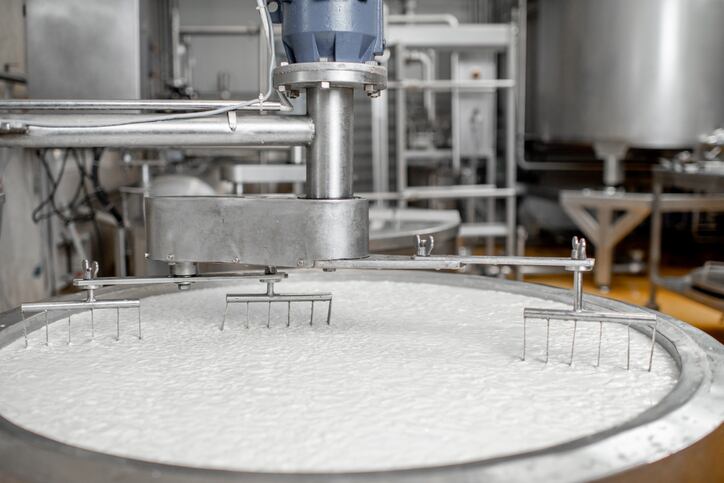Since 2008, the Innovation Center has worked with the US dairy industry on common goals and opportunities, like improving existing food safety programs to ensure control of environmental pathogens.
Its latest report, ‘Controlling Pathogens in Dairy Processing Environments,’ outlines best practices for the separation of raw and ready-to-eat products, good manufacturing practices (GMP), sanitary facility and equipment design, principles of cleaning and sanitation and environmental monitoring programs (EMPs).
“This is an important document for the industry that could not have come to life without the collaboration and leadership of several dairy industry food safety experts,” said David Kedzierski, VP of food safety and regulatory affairs for Agri-Mark, Inc./Cabot Creamery.
Core pathogen control principles
The report says it intends to build knowledge and communicate best practices for all food safety practitioners, including hourly employees, engineers, quality professionals and more. It also details guidance for both wet and dry processing environments.
Since there is a greater likelihood of finding pathogens in uncontrolled or raw manufacturing areas than in controlled production or Ready-to-Eat (RTE) areas, the report authors advise managing the flow of personnel, supplies, air movement and equipment to reduce the potential for cross-contamination.
Any surface in a dairy production facility can be wet from manufacturing conditions, which can support microbial harborage and growth. Dry, well maintained and crack-free surfaces are key. The report defines harborage points as locations where pathogens may survive that are are usually difficult to reach with standard cleaning.
Having a sanitary design in processing facilities involves the design, construction and installation of equipment to support effective and efficient cleaning and sanitizing. The report authors suggest quality, food safety and engineering professionals spend time observing and performing cleaning duties to build practical knowledge.
Implementing EMPs in facilities is recommended to measure the success of pathogen control. They assesses conditions during and after production and verifies that preventive controls, GMPs, sanitary design and sanitation programs are effective.
Basic hygiene zoning separates hygiene levels in a plant based on the risk to finished products and their further processing requirements. It’s implemented to prevent cross over of pathogens, typically using physical barriers like walls or curtains.
The report emphasizes the distinction between hygiene zoning and pathogen environmental monitoring zoning, the latter of which is the act of defining areas of the plant to monitor for pathogens based on proximity to product and product contact surfaces.
Diverse conditions for diverse pathogens
The most common pathogens associated with the production of milk and milk products that processors need to prevent and control are Listeria monocytogenes, Salmonella and Cronobacter sakazakii. They are reported to be able to persist in processing plant niches for years.
Listeria is most found in cool wet areas of the processing plant where pasteurized products are handled and stored, while Salmonella and C. sakazakii are found in dry dairy powder production.
Those in the industry “must understand the microbial ecology of processing environments to implement proper controls that protect the safety of its products,” according to the report.
“The microbial diversity within a processing plant depends and is directly influenced by various factors including raw materials, process, products, workers’ activities, infrastructure and cleaning regimens. For example, rooms where raw milk is received, stored and handled would exhibit a wider microbial diversity than rooms in which pasteurized or dry milk products are handled.”
More information and guidance can be found in the full report, which totals more than 90 pages and is linked from US Dairy’s website.

